One of Peru’s wonders is its extensive jungle wildlife. If you plan to visit the Amazon during your vacation, you should know what it offers.
In the Amazon Rainforest, between the Amazon, Madeira, and Orinoco river basins, you can find magical creatures and fantastic specimens, such as Earth’s most enormous freshwater cetacean, the Pink River Dolphin.
The Machu Travel Peru team has created an article about these cute animals, explaining their importance in South America.
| Scientific name | Inia geoffrensis |
| Common name | Amazon river dolphins |
| Subspecies | Orinoco river dolphins, Bolivian river dolphins, and Amazon river dolphins |
| Diet | More than 40 species of fish, shrimp, turtles, and crabs |
| Size | They can grow up to 2.7 meters long (9 feet) |
| Weight | They weigh up to 400 pounds (181 kilograms) |
| Lifespan | 12 – 18 years |
| Predators | Caimans, large snakes, and Jaguar. But, once they reach adolescence, their predators decrease to only the human factor |
Everything you need to know about the Pink River Dolphin
- Why are these dolphins pink?
- Not all of them are pink
- Pink color as a weapon of seduction
- The largest species of dolphins
- The smartest dolphins
- Excellent swimmers
- Social with humans, lonely among them
- Pink river dolphin eat almost everything
- Live in the Amazon and Orinoco river systems
- Pink dolphins in endangered
- Pink river dolphin, surrounded by myths and legends
Why are these dolphins pink?
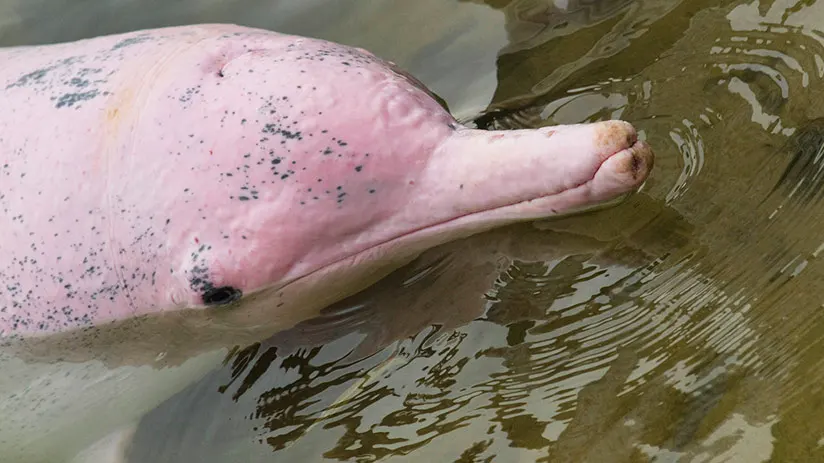
Pink river dolphins (inia geoffrensis) are also known as “botos”. They have a different appearance than gray sea dolphins.
Since pink dolphins, as their name suggests, are pink in color, they have a natural inclination to fight and harm each other. Pink scar tissue covers their wounds and replaces their gray skin as they heal.
They have low, crest-like dorsal fins and long, slender snouts. They also have a plump body, broad cheeks, and a rounded and pronounced forehead. Small eyes with good eyesight and a head that can turn in all directions also characterize them.
Not all of them are pink
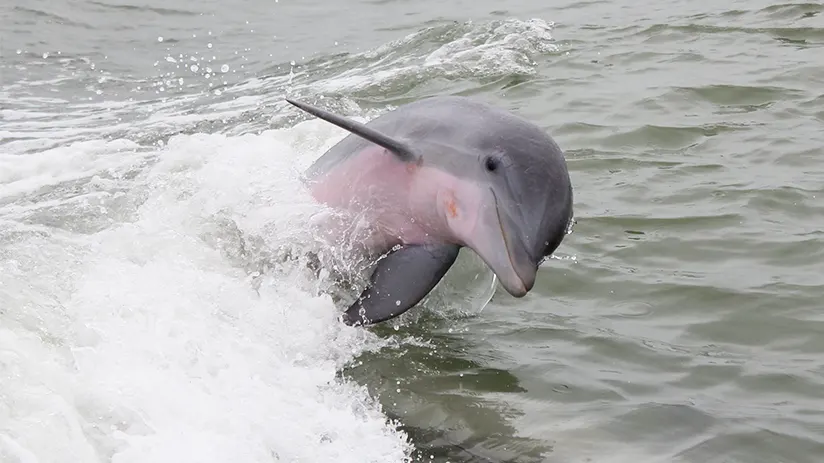
Despite being named the pink dolphins, not all of them are pink. These dolphins initially have a grayish color at birth. As they get older, many turn pink because of scar tissue from wounds from fights and rough games in childhood. However, some people stay gray.
Also, the hue of those who are pink can vary from pale pink to flamingo pink. Even when these dolphins are happy or excited, they can turn a much brighter pink.
Pink color as a weapon of seduction
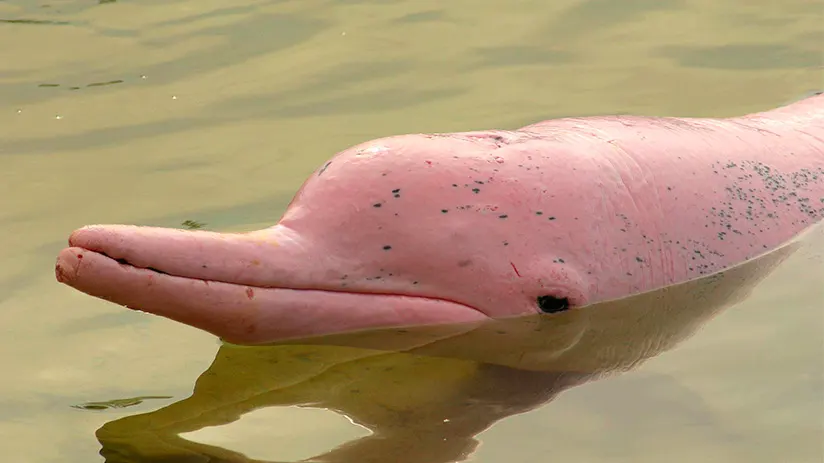
Not surprisingly, the Amazon river dolphin is one of the most intelligent animals; dolphins have curious methods of courting their counterparts. These unique dolphins have two charming ways of attracting mates.
First, the more pink the dolphin is, the better for the female. Remember that their coloration is because of scar tissue from fighting. So, the pinker, the more aggressive, and the more aggressive, the better for protecting the hatchlings. Remember that their coloration is because of scar tissue from fighting. So, the pinker, the more assertive, and the more aggressive, the better for protecting the hatchlings.
Second, males usually pick up objects in their mouths. This can be anything from a reed or a branch to a living turtle. The male then waves this object in the air to attract curious females.
The largest species of dolphins
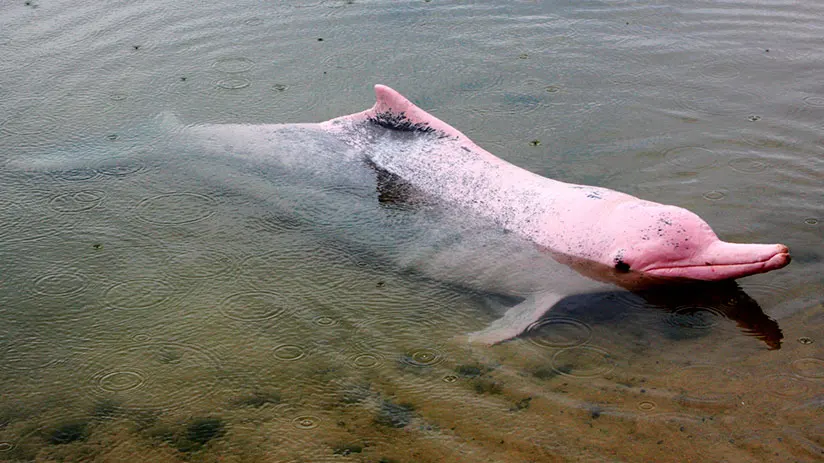
These pink cetaceans are pretty significant. They can grow up to eight feet long and weigh an average of 450 pounds or 204 kilograms. For this reason, they are the most giant dolphin species on earth.
Even the males are much larger and pinker than the females. They can live from 10 to 30 years in captivity. However, their life expectancy under natural conditions is still unknown and depends on the kind of species river dolphins are.
These pink cetaceans are significant: They can grow up to eight feet long and weigh an average.
The smartest dolphins
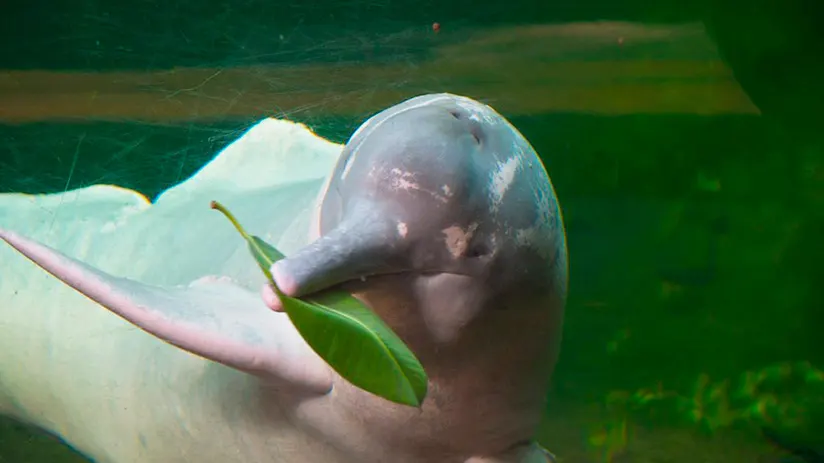
Among the five species of freshwater dolphins, this river dolphin on the Amazon in Peru is at the top of the most innovative list. In addition to their large size and weight, they have giant brains.
When we say giant, we mean big; they have 40 percent more brain capacity than ordinary humans. Despite being shy creatures, seeing them attracted to people and interacting with them is pretty standard. As mentioned earlier, they approach canoes and children, jumping and showing off. They approach the rafts and are very curious and communicative.
Excellent swimmers
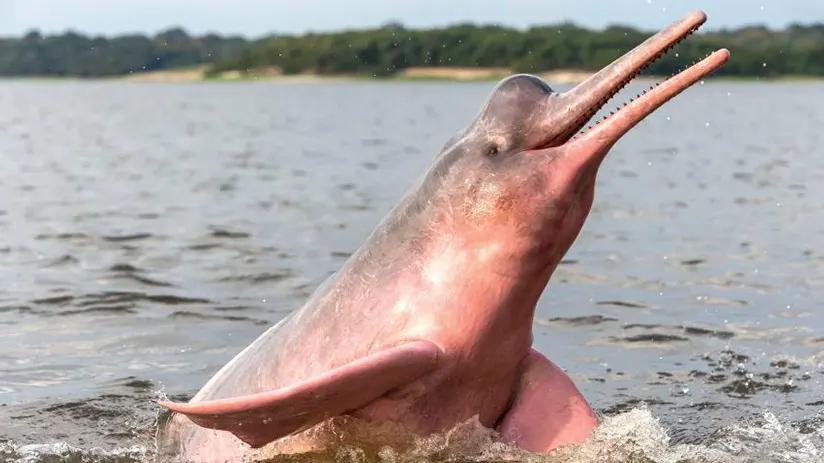
Our cute friends are incredibly agile. Much of their agility is due to their ability to turn their necks while swimming quickly. After all, the vertebrae in their necks do not fuse. Therefore, they can turn their heads at a 90-degree angle, allowing them to maneuver over various obstacles.
They can swim upside down. This helps them see the river bottom better. It also helps them move through submerged trees and bushes to find food. Their tiny eyes have excellent underwater eyesight and can catch prey with echolocation.
Socials with humans, lonely among them
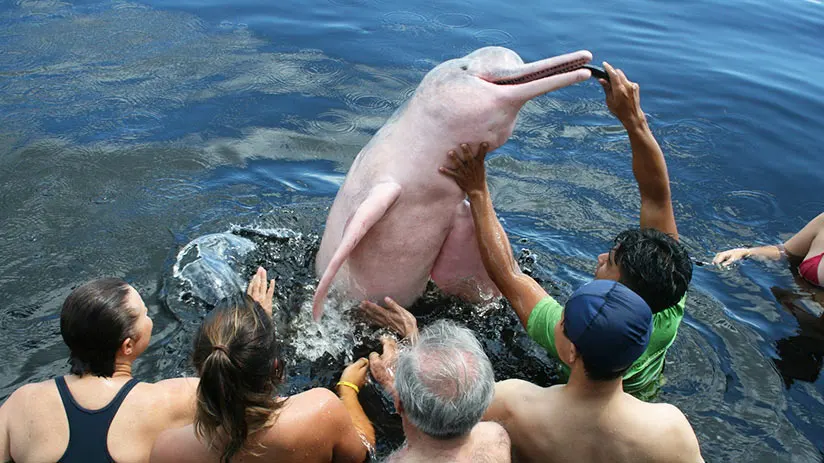
Social and solitaries, at the same time? Yes, you didn’t read wrong, but quite the opposite.
Researchers around the world are still studying these fantastic animals. Little by little, we are learning more about their behavior. In this sense, we can define these two facts:
A. Social with humans
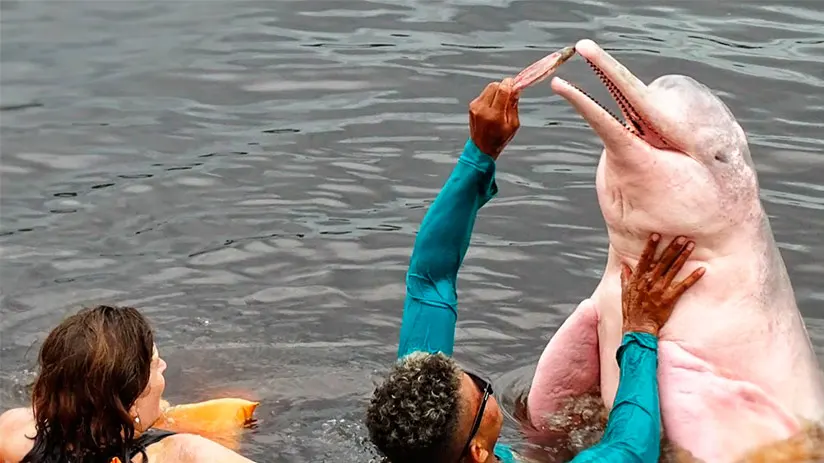
Among all Amazon rainforest animals, the Pink cetaceans are very social with humans. They love to gather near boats in groups of up to four.
These groups usually include mothers and their young. They play in front of tourists, showing off their skills. Some of these pink friends even grab oars from distracted fishermen and run away with them.
In the wild, when pregnant or nursing their young, they often gather in groups of 20 or more. They move slowly as they search for food or care for their newborns together. They usually swim alone the rest of their lives or, at most, in groups of 4 integrants.
B. Alone among them
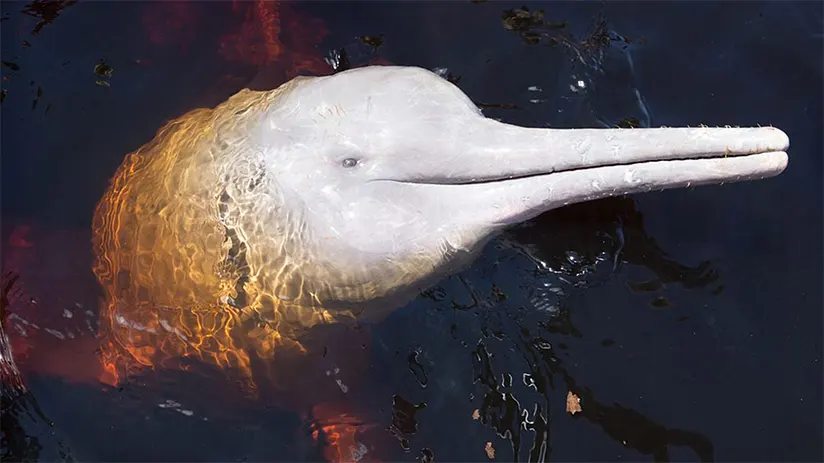
As we mentioned, our pink friends can usually be found alone, in pairs, or small groups of up to 4 members. But large groups are rare. This happens only during gestation, lactation, or when raising young dolphins for a short time.
If you travel with a travel agency for tourism in Peru, you can find small groups of 20 to 40 members. These groups are in their natural habitat, guided by an expert tour guide. But in general, this dolphin usually prefers to stand alone.
Pink river dolphin eat almost everything
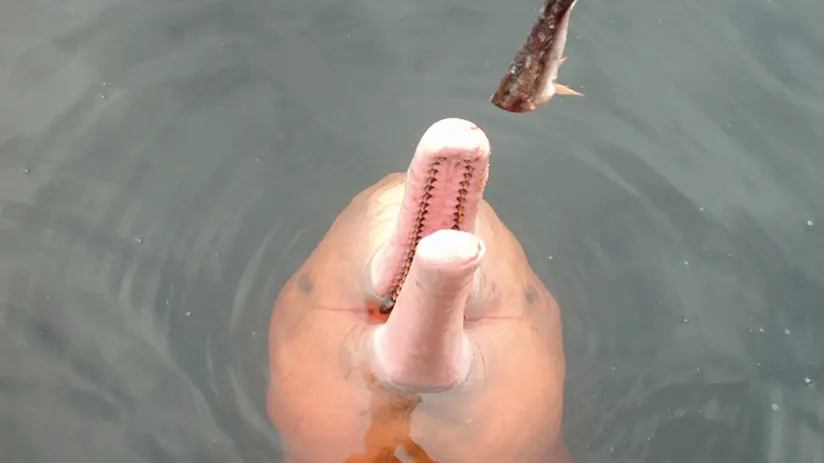
These cetaceans are typically highly active during the day and are not picky about their food choices. Their diet is exceptionally varied, and they do not suffer from the lack of a single type of food. Thanks to the biodiversity in Peru, these animals thrive in the river basins of the Amazon region. They enjoy a varied diet of over 40 fish species, shrimp, turtles, and crabs.
As you can see, their diet is quite diverse compared to other toothed whales. For this reason, they have developed molar tooth equivalents, just like humans, because of their varied diets. Precisely, these fascinating dolphins use these teeth to grind food before swallowing.
Live in the Amazon and Orinoco river systems
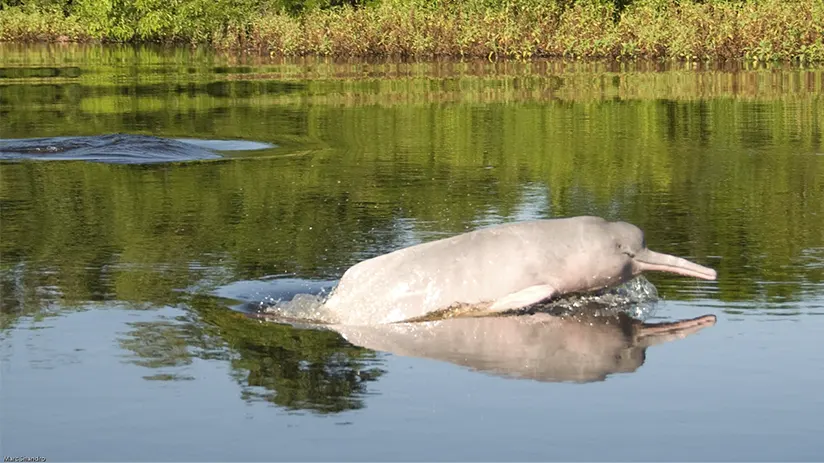
Numerous Peruvian tours offer the possibility of seeing how this dolphin lived. So, if you are looking for one of the most exciting things to do in Peru, swimming with these pink friends should be your first option. Therefore, Pacaya Samiria National Reserve in Peru will be your place; there, you will be able to find them and appreciate all their splendor.
Along with this national reserve, you can find them in their natural habitat. They live in expansive rivers far from the sea. They also live in small streams, lakes, and flooded forests. You can find them in underwater grasslands, too.
They are found in six countries: Bolivia, Brazil, Colombia, Ecuador, Peru, and Venezuela. In addition, their largest resident populations exist in the Amazon and Orinoco river systems and the Araguaia River in Brazil.
Pink dolphins in endangered
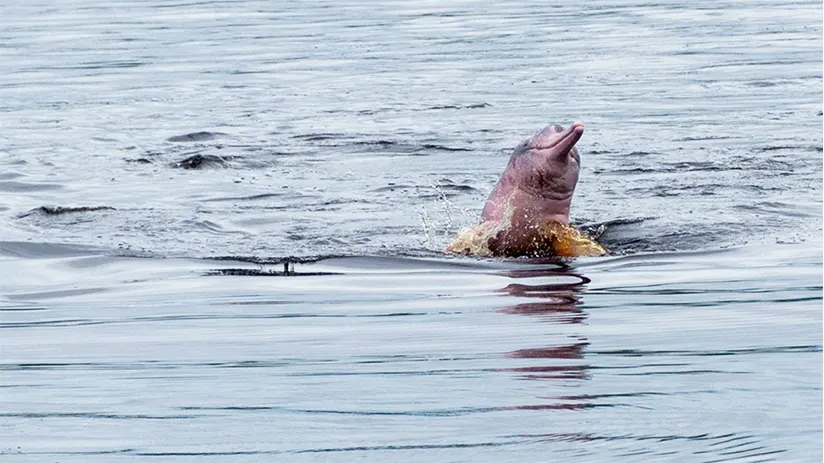
Knowing how many pink dolphins exist in the Amazon is complicated. They are considered an endangered species in Peru because they are deliberately killed. The International Union for Conservation of Nature, or IUCN, calls the data deficient. This is because dolphins are usually seen in groups of 2 to 4.
In addition, many of the rivers are muddy waters, making specimens challenging to detect because the water level rises and falls. This may be because they are intelligent animals. They are also shy and elusive, and they do not like to be seen for long.
In recent years, the IUCN noticed refuges and conservation sites in the Amazon basin. These areas are home to some endangered animals, like pink cetaceans. As a result, the IUCN decided to classify them as Endangered (EN). This may be due to their most common jungle predators in adult life, humans, and pollution.
Pink river dolphin surrounded by myths and legends
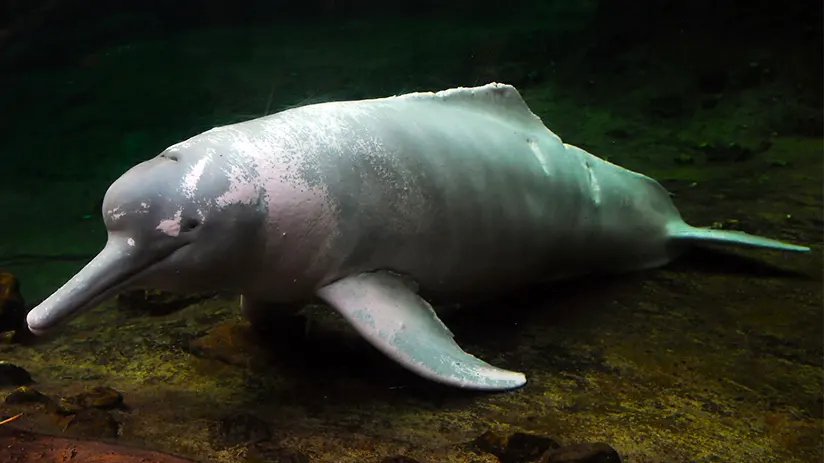
Many legends and stories exist about the pink dolphin. One legend says that at night, these dolphins turn into handsome men.
They then seduce the women of the town and others, and they magically take you to another city. People have attributed a semi-magical condition to them since they symbolize protection. Among all the things to do in Iquitos, swimming with these dolphins is one of the best things to experience.
“THERE’S NO QUESTION DOLPHINS ARE SMARTER THAN HUMANS AS THEY PLAY MORE”
We hope we have helped you learn a little about these lovely animals. Today there are numerous routes and Peruvian Amazon tours where the possibility of swimming with these friendly dolphins is offered. Without a doubt, the Pink River Dolphin is one of the animals that you will not want to miss on your vacation.
The Machu Travel Peru team hopes they have been helpful. If you want to know more about our different routes, you can consult with our team of advisers. They will be happy to help you swim with the curious dolphins!